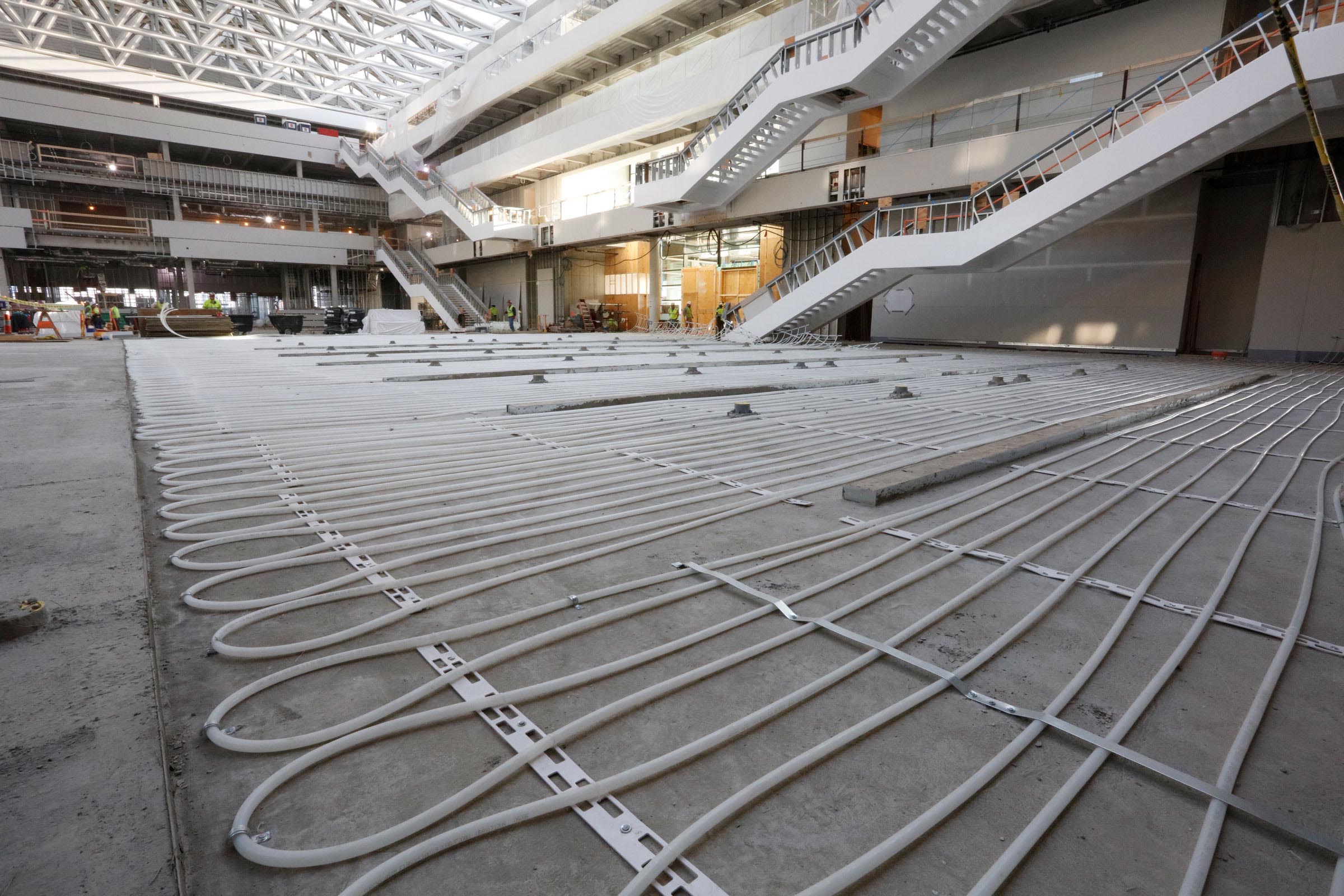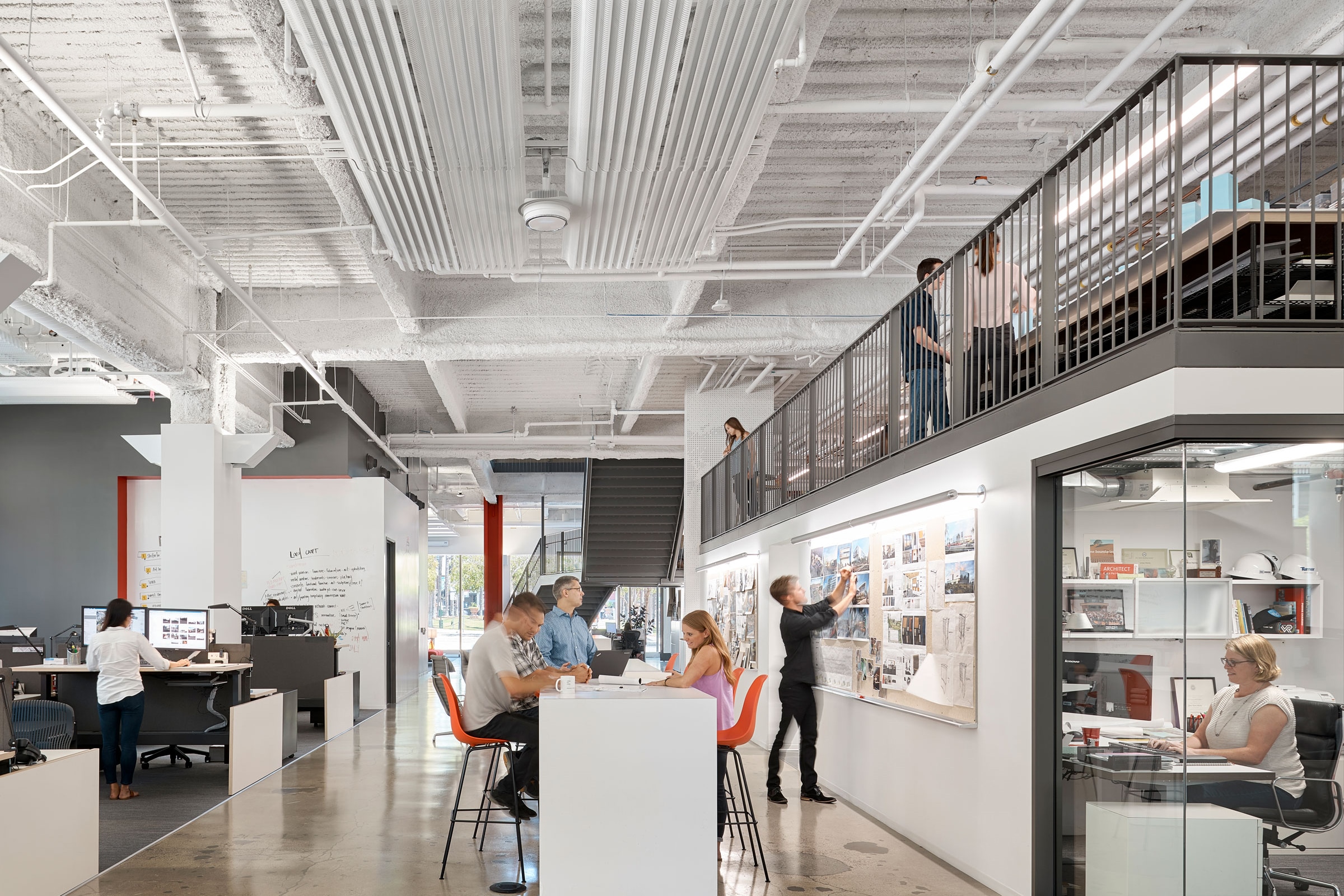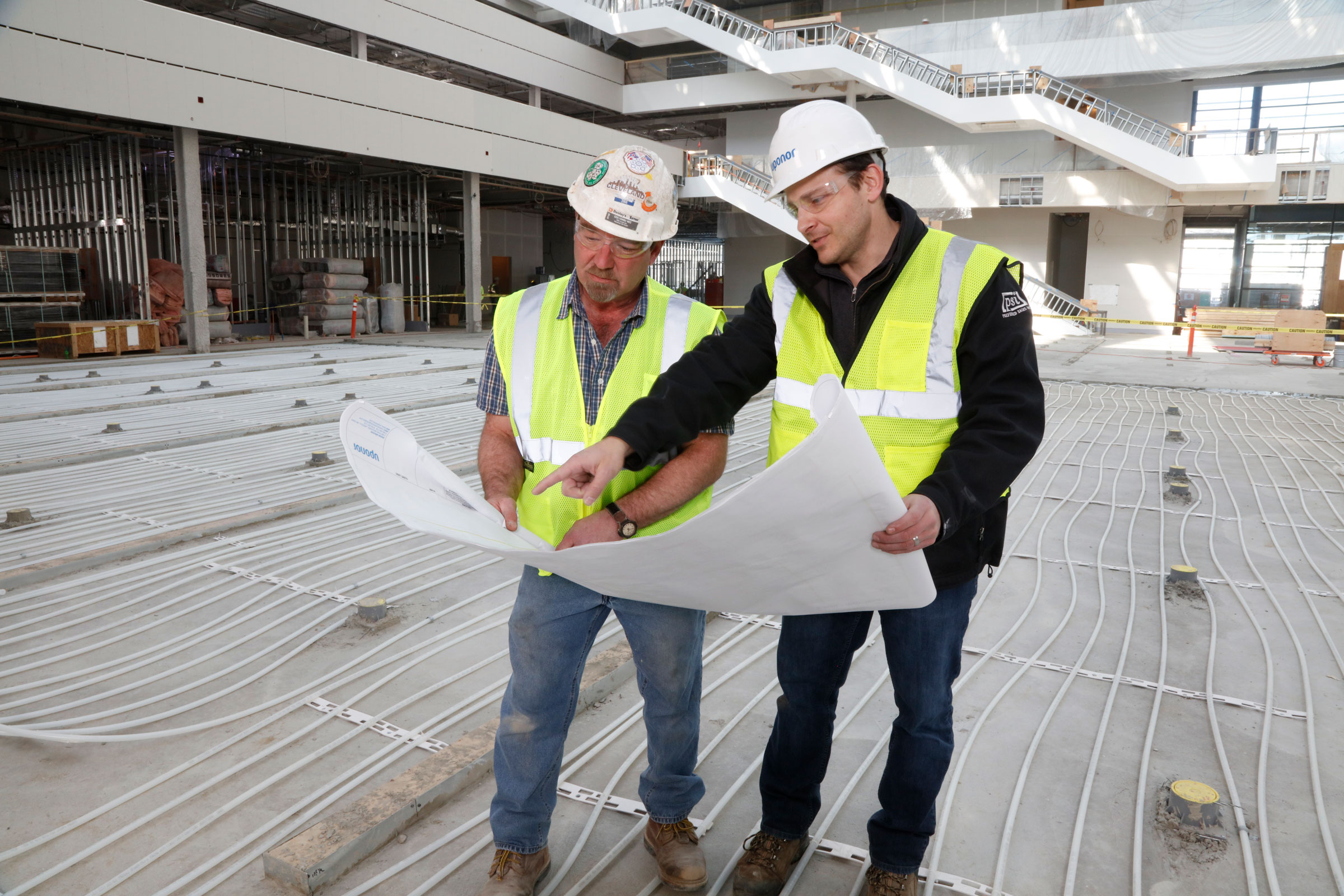Story at a glance:
- Radiant heating systems supply heat directly to the floor or to panels in the wall or ceiling of a house.
- Several different types of radiant floor heating exist—from air-heated to hydronic.
- Radiant heat has been said to eliminate what is sometimes called “sick building syndrome,” as it eliminates recirculated air.
What is radiant heat and what exactly is a radiant heating system?
Radiant heating systems supply heat directly to the floor or to panels in the wall or ceiling of a house, according to the US Department of Energy. The systems depend largely on radiant heat transfer—the delivery of heat directly from the hot surface to the people and objects in the room via infrared radiation. Radiant heating is what you feel when you can feel the warmth of a hot stovetop element from across the room. But when that radiant heating is in the floor, you might hear it called radiant floor heating or, simply, floor heating.
Radiant solutions have long been popular in Europe, even as they continue to gain steam in the US. In fact, it’s said that the radiant heating systems can be traced all the way back to the Roman Empire.
But what are the options, and what are the benefits when it comes to radiant heat? We look to the US Department of Energy to break down the various types of radiant floor heat.
Types of Radiant Floor Heat

Photo courtesy of Uponor
Air-Heated Radiant Floors
Air cannot hold large amounts of heat, so radiant air floors are not cost-effective in residential applications and are seldom installed. Although they can be combined with solar air heating systems, those systems suffer from the obvious drawback of only producing heat in the daytime, when heating loads are generally lower.
The inefficiency of trying to heat a home with a conventional furnace by pumping air through the floors at night outweighs the benefits of using solar heat during the day. Although some early solar air heating systems used rocks as a heat-storage medium, this approach is not recommended (see solar air heating systems).
Electric Radiant Floors
Electric radiant floors typically consist of electric cables built into the floor. Systems that feature mats of electrically conductive plastic mounted on the subfloor below a floor covering such as tile are also available.
Because of the relatively high cost of electricity, electric radiant floors are usually only cost-effective if they include a significant thermal mass like a thick concrete floor and your electric utility company offers time-of-use rates. Time-of-use rates allow you to “charge” the concrete floor with heat during off-peak hours (approximately 9pm to 6am). If the floor’s thermal mass is large enough, the heat stored in it will keep the house comfortable for eight to 10 hours without any further electrical input, particularly when daytime temperatures are significantly warmer than nighttime temperatures. This saves a considerable number of energy dollars compared to heating at peak electric rates during the day.
Electric radiant floors may also make sense for home additions if it would be impractical to extend the heating system into the new space. However, homeowners should examine other options like mini-split heat pumps, which operate more efficiently and have the added advantage of providing cooling.
Hydronic Radiant Floors
Hydronic (liquid) systems are the most popular and cost-effective radiant heating systems for heating-dominated climates. Hydronic radiant floor systems pump heated water from a boiler through tubing laid in a pattern under the floor. In some systems, controlling the flow of hot water through each tubing loop by using zoning valves or pumps and thermostats regulates room temperatures. The cost of installing a hydronic radiant floor varies by location and depends on the size of the home, the type of installation, the floor covering, remoteness of the site, and the cost of labor.
According to a previous article by Uponor, warm water flows through flexible plastic tubing embedded in a concrete slab or placed on top or underneath the subfloor in a hydronic radiant heating system. The warmth from the flowing water through the tubing radiates up from the floor to bring comfort to people in a space.
“Because hydronic radiant heating systems use pumps to move water instead of fans or blowers to push air, the system does not circulate viruses, allergens, or odors throughout the indoor space,” Kim Bliss, content development manager at Uponor, previously told gb&d. “In addition to benefits in air quality, hydronic radiant floor heating systems also do not require ductwork, so they provide greater architectural freedom for building design, including expansive ceilings with open spaces.”
Benefits of Radiant Heat

Photo courtesy of Barcol-Air
The benefits of radiant heat are many—including health benefits, energy savings, and design flexibility.
Decreased Ductwork
Although radiant doesn’t eliminate the need for an air system, it does significantly reduce the amount of air being moved in the building—so ductwork is decreased by as much as 60 to 70%.
“Water is a much better energy transfer medium than air,” said Michael O’Rourke, national sales manager at Barcol-Air, in a previous article for gb&d. “While you still have to supply outside fresh air for ventilation and dehumidification, the ductwork is significantly smaller since only the outside fresh air is required and not all the recirculated air of a standard air system.”
Design Flexibility
In addition to the reduced ductwork, the ceiling panels offered within the Barcol-Air system can be selected based on the architectural design of a space, allowing for easy accommodation of lighting equipment, fire protection systems, support grid systems, and hidden support systems.
Long-Time Performance
O’Rourke points to long-term performance as another benefit. When compared to a variable air volume (VAV) system, Barcol-Air’s radiant systems offer maximum energy savings while also providing architectural freedom and minimal space requirements.
Cost Savings
While cost savings vary depending on the location of the project energy costs and the construction and design of the project itself, he says most projects see energy savings of 30 to 40%.
And, because a radiant system has very few moving parts, maintenance is very minimal, resulting in saved operating costs, he says.
Health Benefits
There are also health benefits, as the so-called “sick building system” is simply nonexistent in buildings with radiant systems thanks to the elimination of recirculated air, O’Rourke says.
Barcol-Air’s Active Beam system maintains constant control of humidity and guarantees minimum fresh air delivery. In addition, the control system allows for room dew point monitoring with the help of small, high-quality sensors that can be located in the room rather than in the ceiling.
Acoustic Benefits
It’s quiet, too. By separating the sensible airside loads and treating them directly—especially in areas with radiant asymmetry—there are much higher levels of comfort for building occupants.
“By reducing the amount of air movement in the space, we also make the space much quieter,” O’Rourke says. “Indoor air quality is enhanced as well, since we are only bringing in fresh air and exhausting internal building/room air, providing exceptional ventilation effectiveness.”



